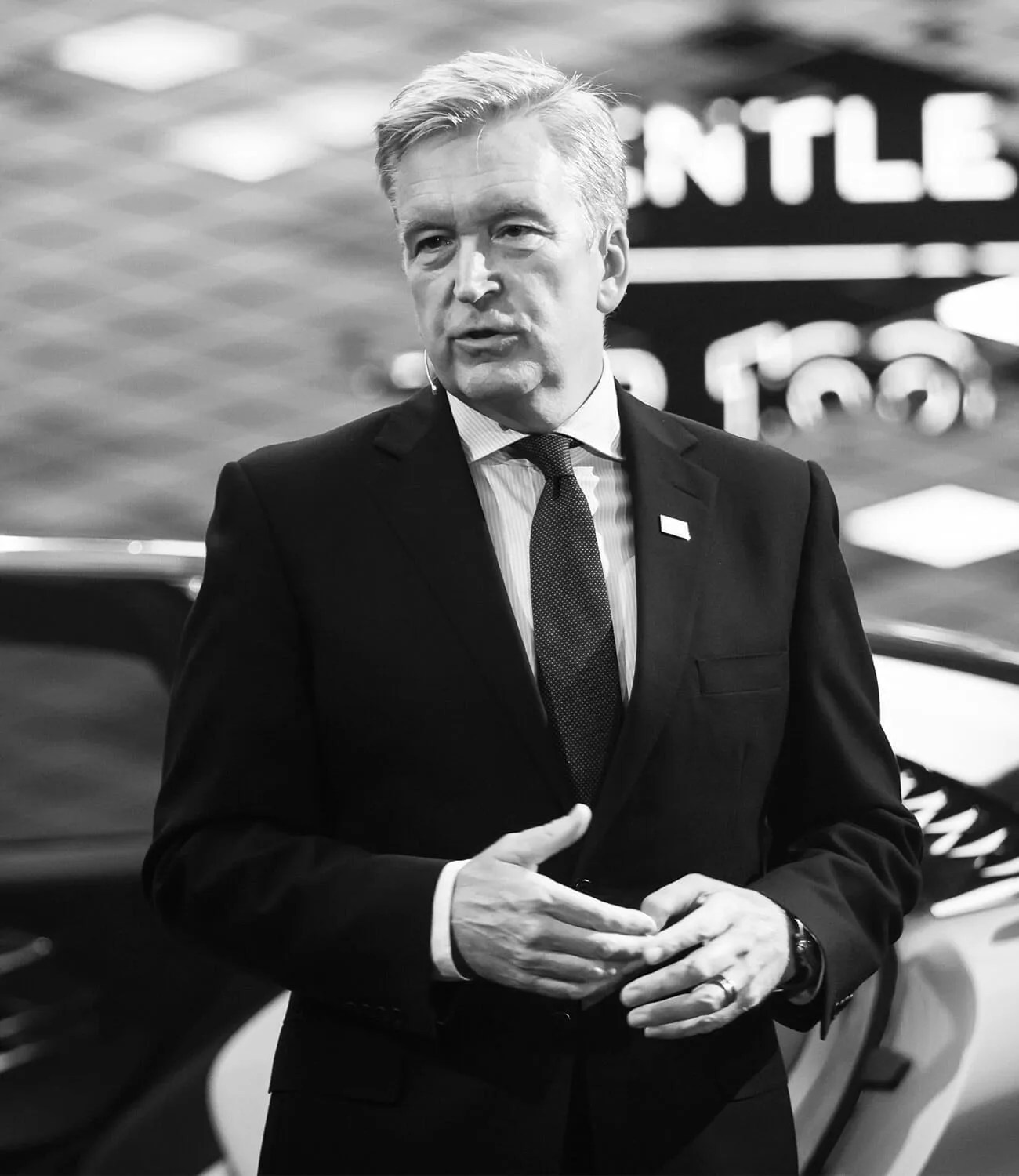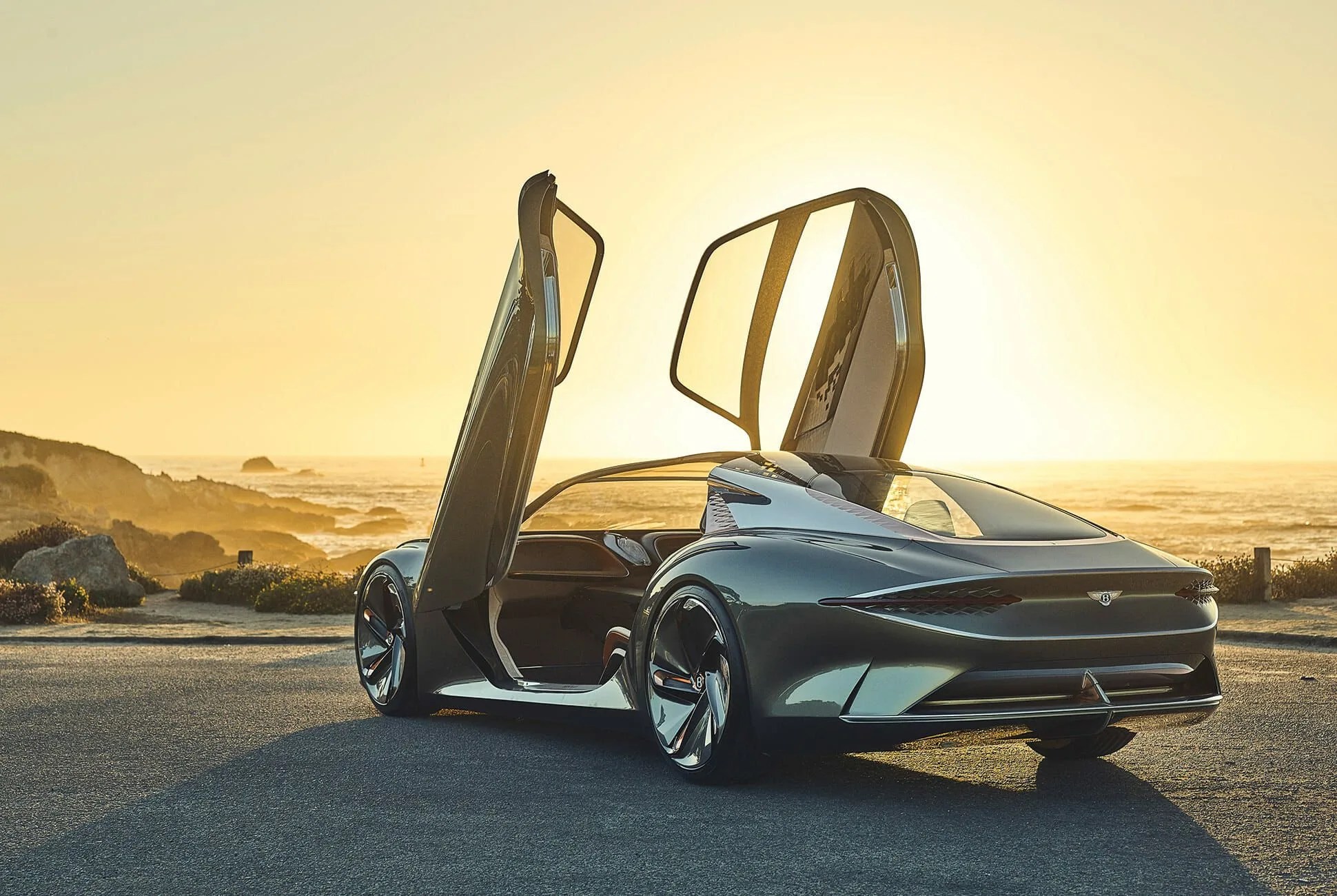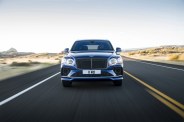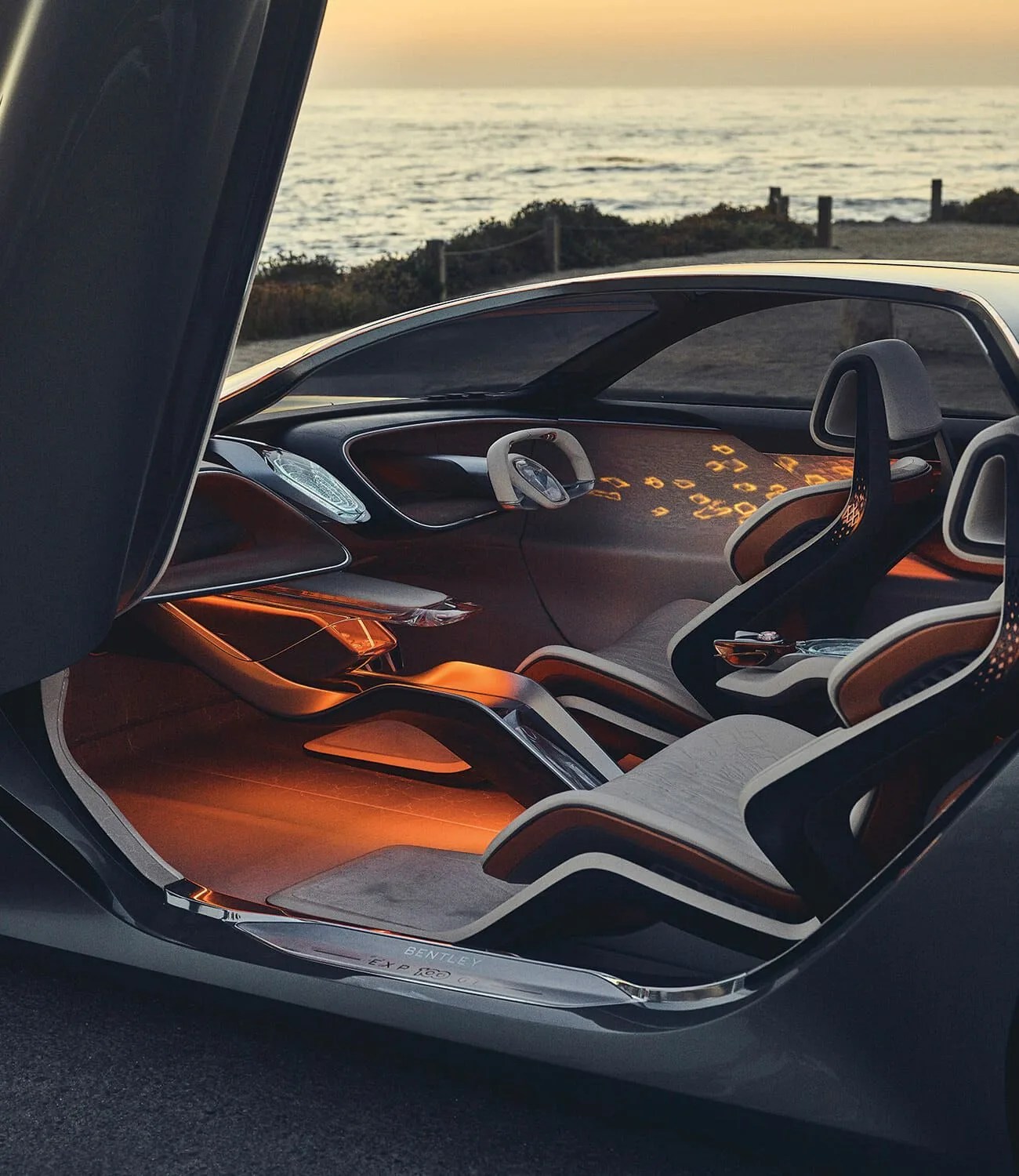Adrian Hallmark looks pretty much exactly like you’d expect the CEO of Bentley Motors to look. Middle-aged, square-jawed and broad-faced, he’s the sort of generically good-looking British fellow who you’d see playing M in a Bond film before Dame Judi Dench owned the role.
He’s also holding the reins of the company at a pivotal moment in time. Bentley isn’t just celebrating its 100th birthday this year; the brand is celebrating its centenary with what Hallmark himself described to Bloomberg as “probably the worst year in our history” squarely in its rearview mirror. And the road ahead is a twisty one; parent company Volkswagen AG is pushing full steam ahead into electrification, with plans to invest $91 billion in electric cars and tech in the near future in order to crank out three million EVs a year by 2025.
For a brand based around the idea of grand tourers designed to drive for days on end at high speeds, pushing into electric cars — which, for all their rapidly-gaining capabilities, still can’t come close to the range of their internal-combustion equivalents, let alone the “recharging” time of a $500 hooptie — seem like a honker of a pill to swallow. Hallmark, for his part, isn’t in denial about the challenges. In order to work for Bentley, the CEO says, batteries need to reach parity with the range and performance of the carmaker’s current gas-powered cars.
“We don’t see anything until the mid-2020s that’s big and strong enough for our needs,” Hallmark says. “We would need probably a 150-kilowatt-hour battery to propel something the size of a Flying Spur or a Bentayga.” (The largest electric car battery currently used, for the record, is the 100-kWh unit in top-trim Tesla Model S sedans and Model X crossovers.) A slightly smaller battery could be practical, he hedges — “We can maybe get 130-135 kWh” to work, he says — but that would have to be in part due to better battery management technology as well as bigger electron tanks, so to speak.

Also — new types of electron tanks. The current type of battery technology commonly used — lithium-ion, which use a liquid electrolyte to carry charge around — just doesn’t have what it takes, at least for the Flying B. “Lithium-ion is not the long-term solution. Full stop,” Hallmark says. “We’re looking forward to solid-state.”






